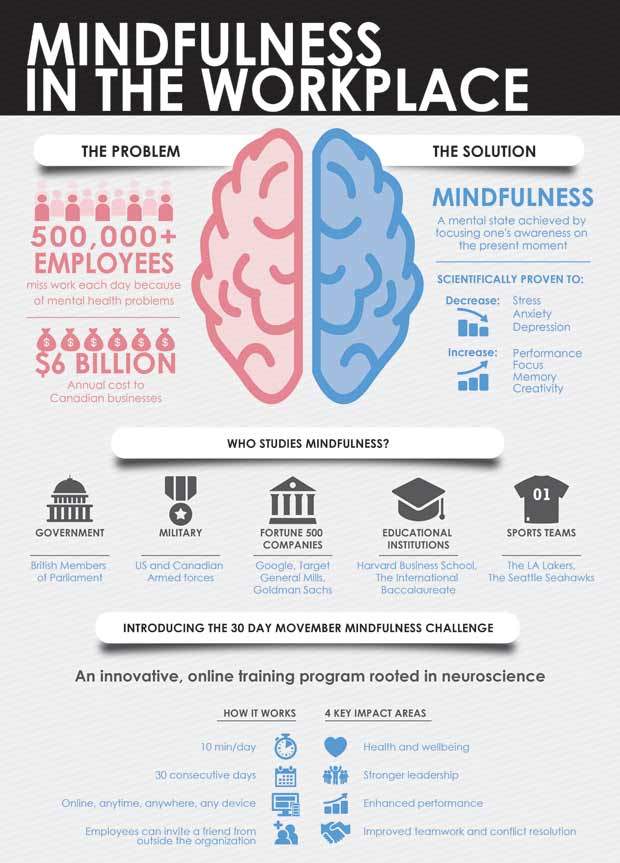
In thousands of studies published in scientific journals since the 1970s, the practice of mindfulness – a form of mental exercise which aims to achieve greater clarity by focusing one’s attention on the present moment and away from thoughts about past and future events – has been shown to be effective in reducing stress and improving overall mental health. But for many, it can be difficult to find time in a busy schedule for the lengthy meditation sessions that mindfulness typically demands.
Geoff Soloway hopes to change that. His organization, MindWell, recently launched an online program called the 30 Day Mindfulness Challenge, which is geared towards making mindfulness both less time-consuming and more accessible to people in the workplace.
“The mind is so quick to wander,” says Soloway. “It’s always thinking about the past – what we did well or didn’t do well. Or it’s trying to plan the future. And all this time, it’s going everywhere else except for the present moment.”
What mindfulness does, then, is allow us the ability to notice how these thoughts might trigger certain reactions in us, both mentally and physically – and begin to train ourselves to react differently in the moment. “If our emotions get flared up, we can recognize if we’re feeling angry and we don’t need to respond from an angry place,” he says.
Currently, most mindfulness programs take place in a clinical setting, often through weekly, two-hour group sessions as well as about an hour of daily practice. Participants often will follow along to an audio recording that guides them through various meditations, stretches and other exercises. They need to find a quiet space, sometimes even lie down, in order to complete a practice.
Soloway is offering a different approach: called “Take Five,” it strips the mindfulness practice down to its essentials with the goal of making it more accessible and less disruptive to the daily routine. Rather than half-hour or even hour-long meditations, the Take Five approach involves short mindfulness breaks that can be as little as two minutes – and don’t require the participant to remove themselves from their desk or meeting room.
“Take Five” encourages participants to find certain “cues” to begin a practice – which could be anything from a coffee or lunch break, walking through a certain door, or even during a meeting or conversation with a co-worker. From there, participants follow a five-step process that requires them to focus their attention on whatever they may be experiencing – physical sensations or visual stimuli, for instance – in that exact moment.
Ultimately, the hope is that a program of shorter, simplified mindfulness practices will provide participants with a new tool for managing stress and anxiety.
“We want people to be better at what they’re doing. We want them to be less stressed, for people to sleep better”
“We’re trying to help reduce stress, increase performance,” says Soloway. “We want people to be better at what they’re doing. We want them to be less stressed, for people to sleep better. We know that it helps people focus, and concentrate. It increases their health and mental health.”
Whether MindWell’s stripped-down approach is as effective as longer, more traditional practices is not entirely certain, although Soloway notes that the program is currently the focus of a study by researchers at UBC’s Sauder School of Business. Either way, he hopes that it will serve as a jumping-off point that encourages its participants to continue pursuing mindfulness long after the initial challenge has concluded.
“As you know, mindfulness is really a lifelong practice that doesn’t end after 30 days,” he says. “[This program] is just the beginning.”
From: National Post
